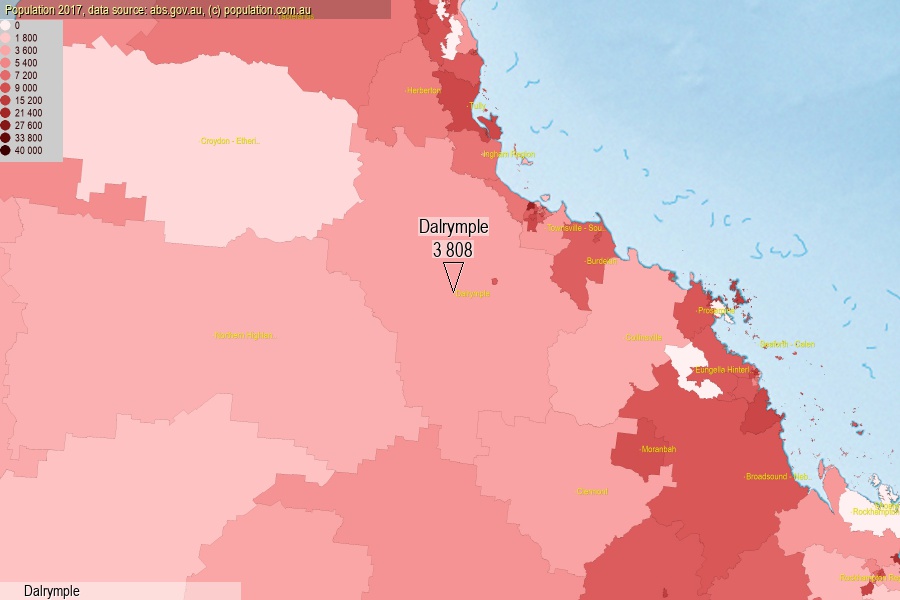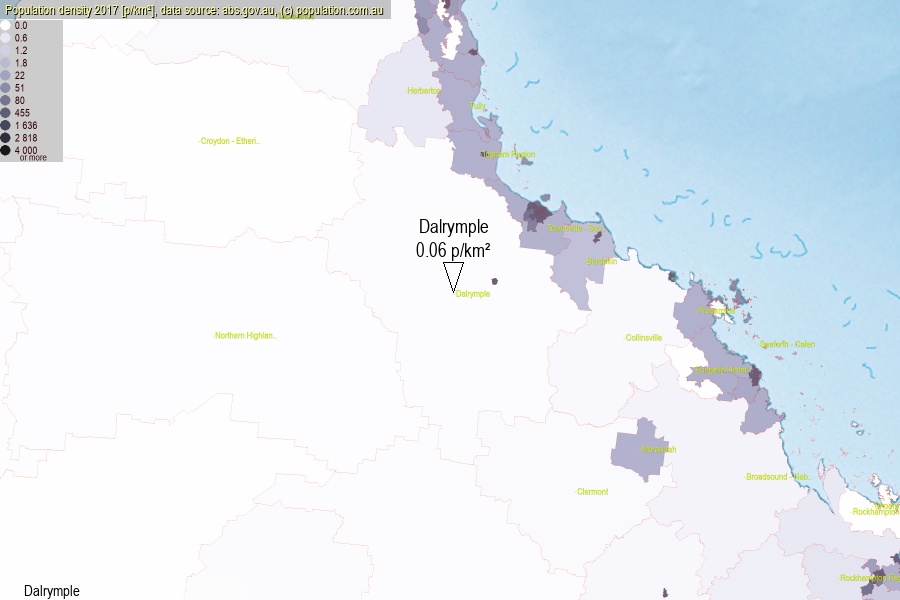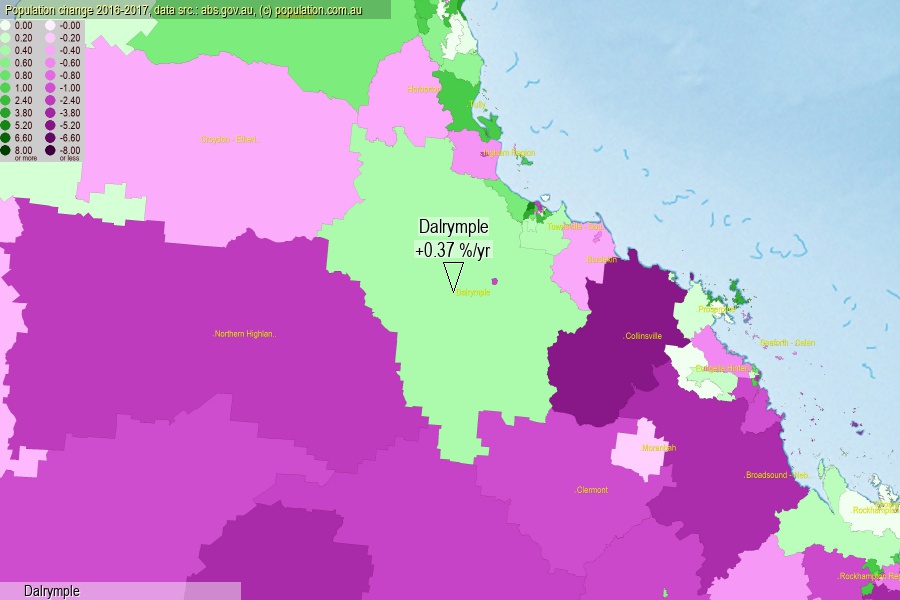 population.com.au
population.com.auLast official estimated population of Dalrymple (as Statistical Area Level 2) was 3 808 people (on 2017-06-30)[2]. This was 0.02% of total Australian population and 0.076% of QLD population. Area of Dalrymple is 68 340.30 km², in this year population density was 0.06 p/km² . If population growth rate would be same as in period 2016-2017 (+0.37%/yr), Dalrymple population in 2025 would be 3 922. [0]



Click to enlarge. Dalrymple is located in the center of the images.
Population [people], population density [p./km²] and population change [%/year] [2]
View borders » (new window) [4]
[1991-1992] -0.37 %/Yr.
[1992-1993] -0.77 %/Yr.
[1993-1994] -0.83 %/Yr.
[1994-1995] -1.30 %/Yr.
[1995-1996] -0.26 %/Yr.
[1996-1997] -0.32 %/Yr.
[1997-1998] +0.44 %/Yr.
[1998-1999] -0.06 %/Yr.
[1999-2000] -0.09 %/Yr.
[2000-2001] +0.44 %/Yr.
[2001-2002] +0.53 %/Yr.
[2002-2003] +1.10 %/Yr.
[2003-2004] +0.78 %/Yr.
[2004-2005] +0.97 %/Yr.
[2005-2006] +0.48 %/Yr.
[2006-2007] +4.02 %/Yr.
[2007-2008] +2.43 %/Yr.
[2008-2009] +2.32 %/Yr.
[2009-2010] +0.70 %/Yr.
[2010-2011] +1.89 %/Yr.
[2011-2012] -0.10 %/Yr.
[2012-2013] -0.65 %/Yr.
[2013-2014] -1.37 %/Yr.
[2014-2015] -1.33 %/Yr.
[2015-2016] -1.30 %/Yr.
[2016-2017] +0.37 %/Yr.
[0] Calculated with linear interpolation from officially estimated population
[1] Read more about SA2 and Australian Statistical Geography Standard (ASGS) on abs.gov.au
[2] Population data from Australian Bureau of Statistics (Population and density: 2017; change: 2016-2017)
[3] Digital Boundaries: Australian Statistical Geography Standard (ASGS) 2016.
[4] Border coordinates are simplifyed using Ramer-Douglas-Peucker algorithm.